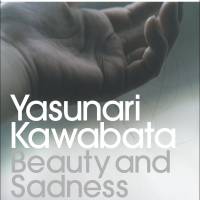Nobel Prize winner Yasunari Kawabata's "Beauty and Sadness" is a sparse and elegant dissection of the messiest human emotions.
Beauty and Sadness, by Yasunari Kawabata.
144 pages
PENGUIN, Fiction.
It's also a study in Japanese aesthetics, as the central characters all have some connection to the arts, and Kawabata deftly paints their worlds with mesmerizing imagery and use of detail.
Successful writer Oki Toshio, 54, longs to hear the New Year's bells in Kyoto with his former mistress, Otoko Ueno, who was only 15 when Oki seduced her. The forbidden, passionate affair had resulted in a stillborn child followed by Otoko's suicide attempt. Married with a young son, Oki considers suicide himself until the couple are separated when Otoko's mother intervenes.
More than 20 years have passed at the book's opening and Oki has written a highly celebrated novel chronicling the affair. Otoko is now a successful painter and is living in Kyoto with her protegee and lover, Keiko. Kawabata carefully slices across layers of time to unfold the spiraling reverberations of the past, as Keiko becomes consumed with jealousy when Oki enters Otoko's life again. This book reveals violent emotion in all its extremes, and makes for fascinating yet disturbing reading while illuminating quiet moments of artistic grace. Not to be missed is Kawabata's final statement on passion and pain, made all the more poignant by the fact that this is his last published novel.
Read archived reviews of Japanese classics at jtimes.jp/essential.

















With your current subscription plan you can comment on stories. However, before writing your first comment, please create a display name in the Profile section of your subscriber account page.